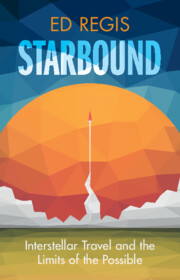Book contents
- Starbound
- Starbound
- Copyright page
- Dedication
- Contents
- Preface
- 1 Origins of the Dream
- 2 The 100 Year Starship
- 3 Three Icons of Star Travel
- 4 Project Orion
- 5 Where To?
- 6 The World Ship
- 7 Hail Mary Propulsion Systems, Inc.
- 8 The Fate of the Crew
- 9 The Moral Status of the Trip
- 10 Let Us Hibernate
- 11 Why Go?
- 12 The Odds
- Bibliography
- Index
- Starbound
- Starbound
- Copyright page
- Dedication
- Contents
- Preface
- 1 Origins of the Dream
- 2 The 100 Year Starship
- 3 Three Icons of Star Travel
- 4 Project Orion
- 5 Where To?
- 6 The World Ship
- 7 Hail Mary Propulsion Systems, Inc.
- 8 The Fate of the Crew
- 9 The Moral Status of the Trip
- 10 Let Us Hibernate
- 11 Why Go?
- 12 The Odds
- Bibliography
- Index
Summary
The Project Orion spacecraft is by common consent the craziest interstellar flight concept ever devised. Ironically, it was also the spacecraft design that received the widest support by scientists, the military and other branches of the US government, as well as by private industry. It was as if all of these people had collectively lost their minds. The basic idea was utterly simple and so intuitively obvious that it could be understood by a child. This was a craft whose propulsion system was built upon the Newtonian principle of action and reaction. The central notion was that of placing a bomb under a rocket and then detonating it to loft the rocket up and away – exactly the same process as putting a firecracker under a tin can and watching it blow sky high. To keep it going up, of course, a series of bombs detonated in sequence would be required. And so the Orion rocket would be propelled through space by a stream of bombs, in fact nuclear bombs, exploding one after another behind it, thereby continuously accelerating the craft. That was the project’s key concept, and as such it was simultaneously perfect and insane.
- Type
- Chapter
- Information
- StarboundInterstellar Travel and the Limits of the Possible, pp. 58 - 75Publisher: Cambridge University PressPrint publication year: 2025

